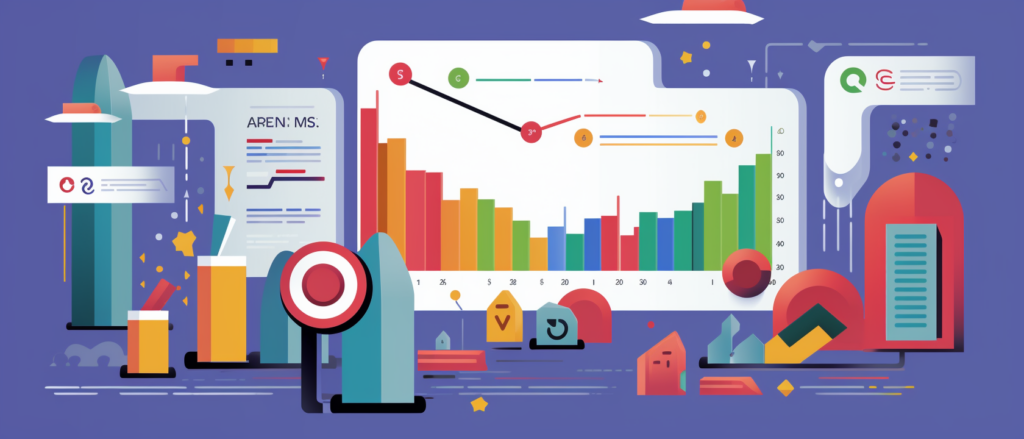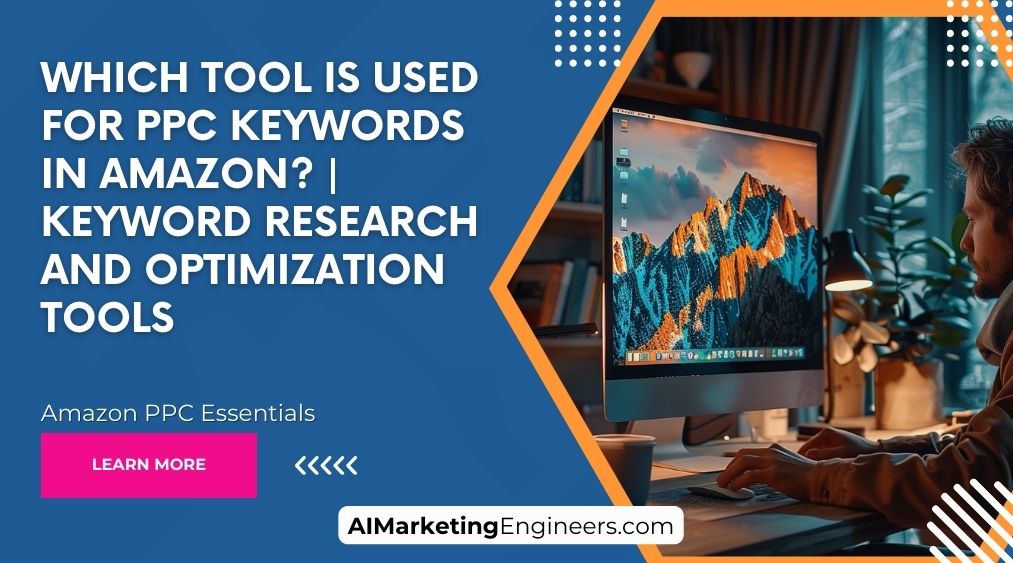Key Takeaways
✅ Conversion Tracking is Crucial: Without conversion tracking, you're flying blind. It's like throwing darts in the dark and hoping to hit the bullseye. By tracking actions such as purchases or sign-ups, you gain real insight into what works. Industries report an average increase of up to 50% in conversion rates when effectively implementing tracking systems. With better data, you can steer your Google Ads towards higher ROI and away from wasted spend.
✅ Key Performance Metrics to Monitor: What's the score? Knowing your Cost per Acquisition (CPA), Click-Through Rate (CTR), and Ad Quality Score is more than a numbers game—it's the pulse of your campaign's health. For example, a change in CTR from 1% to 2% can potentially double your sales! Dive into these stats and understand how they paint a detailed picture of your success.
✅ Optimization Strategies: It's all about fine-tuning. Optimization isn't a one-and-done deal; it's an ongoing mission. By analyzing metrics like CPA and adjusting campaigns, businesses can see up to a 20% cost reduction in acquisition. Increase your Ad Quality Score, and watch as cost per impressions could decrease while your visibility climbs.
![]()
Introduction
Are your Google Ads really working for you or just burning through your budget? In the world of digital marketing, understanding the nuts and bolts of your campaigns is not just helpful—it's crucial for survival. With billions of dollars spent on Google Ads each year, can you afford not to optimize your campaigns?
Tracking conversions and measuring performance metrics are akin to having a GPS system in the wild terrain of online advertising. Without them, you're simply guessing which direction might lead to success. This article is your compass. It unpacks the latest trends and insightful strategies that could have you looking at your campaigns in a whole new light, possibly questioning everything you thought you knew about Google Ads.
Get ready, because we're about to delve into a treasure trove of actions that go beyond the basics. We'll be revealing groundbreaking information that not only illuminates your path to higher efficiency but also paves the way to more impressive profit margins. Stay tuned for actionable insights that promise to fuel your campaigns and catapult your business to the top of the digital food chain.
Top Statistics
| Statistic | Insight |
|---|---|
| Google Ads ROI: An average ROI of 800% ($8 for every $1 spent). | An incredible return that highlights why businesses are eager to invest in Google Ads. |
| Conversion Rates: Average of 4.2% for search ads, 0.55% for display ads. | Understanding these numbers is key for businesses to benchmark their success and optimize campaigns. |
| Global Search Engine Market Share: Google holds 83.84%. | This dominance assures that your ads can reach a vast audience, making Google a go-to platform for advertisers. |
| Cost Per Acquisition (CPA): Stands at $48.96 on the search network. | Comparing CPA against customer lifetime value helps businesses gauge long-term profitability. |
| User Reach: Google Ads can reach over 90% of internet users. | With such a broad reach, Google Ads can be an essential part of any multi-channel marketing strategy. |
Understanding Conversion Tracking
Conversion tracking is the compass that guides advertisers in understanding how their Google Ads campaigns contribute to meaningful customer actions. It is a powerful feature that tracks how consumers interact with ads, ultimately leading to valuable actions such as form submissions, purchases, or phone calls. The significance here is profound: by identifying what drives conversions, businesses can make data-driven decisions to boost their return on investment (ROI). Without conversion tracking, businesses are essentially advertising in the dark, unaware of what elements truly resonate with their audience. Additionally, it allows for the optimization of ad spend by focusing on high-performing areas. Effective conversion tracking can also highlight new opportunities for growth and improvement.
Setting Up Conversion Tracking
For a successful Google Ads campaign, setting up conversion tracking is a foundational step. The process involves creating conversion actions in your account and then implementing conversion tracking tags on your website or app. These tags, or snippets of code, record when a user has completed an action defined as valuable, effectively bridging the gap between the ad click and the conversion. Additionally, by linking Google Ads and Google Analytics accounts, you gain deeper insights, able to track cross-platform visitor behavior and gain more nuanced data. This integration helps in understanding the customer journey more comprehensively. Regularly updating and maintaining these tags ensures accuracy and reliability. A well-implemented tracking system lays the groundwork for continuous improvement and success.
Measuring Performance Metrics
One cannot overstate the importance of measuring performance metrics in Google Ads. Metrics such as Cost Per Click (CPC), Cost Per Acquisition (CPA), Return on Ad Spend (ROAS), and ROI reveal the financial effectiveness of your campaigns. Interpreting these numbers allows marketers to understand the cost of attracting customers and the value those customers represent to the business. Regularly monitoring these metrics is crucial to ensure that the campaigns are cost-effective and achieving the intended financial goals. Granular analysis of these metrics can pinpoint specific areas for enhancement. By understanding these metrics deeply, marketers can make more informed strategic decisions. Continual assessment helps in adapting to market changes and staying competitive.
Using Google Ads Reports
Google Ads reports are akin to a treasure map, showcasing where the campaign struck gold and where it missed the mark. They provide a comprehensive view of your ads' impact, from showing how users interact with your campaigns to highlighting the path they take towards conversion. By looking at metrics within these reports, you can gain insights into ad performance and identify opportunities for tuning your campaigns. These reports are not just a collection of numbers; they're a narrative of your campaign's journey, highlighting successes and areas that need improvement. Utilizing custom reports can tailor insights to your specific needs. Regularly scheduled reporting can keep your team aligned and focused on goals. Detailed reports foster a proactive approach to campaign management.
Optimizing Campaigns Based on Performance Data
Data is the silent hero in the world of advertising. Using performance data to optimize campaigns can transform an underperforming ad into a market-conquering campaign. Strategically adjusting bids, refining ad copy, and honing in on targeting can significantly enhance campaign performance. Success often lies in the details, and by using data to inform these tweaks, businesses can increase their competitive edge. The hard truth in marketing is that resting on your laurels is not an option; continuous monitoring and optimization are essential for keeping your campaigns fresh and effective. Incorporating A/B testing can validate optimization efforts. Detailed analysis of performance data can uncover hidden insights. Keeping abreast of new features and updates in Google Ads can provide additional optimization opportunities.
Common Mistakes to Avoid
No one is immune to mistakes, but in Google Ads, certain errors can be costly. From neglecting to set up conversion tracking accurately to overlooking the importance of consistent monitoring—these missteps can create a ripple effect, leading to misinformed strategy decisions and wasted spend. By recognizing these common mistakes and implementing best practices, businesses can avoid pitfalls that might hinder their campaign's success. Remember, in the digital world, precision and adaptability are your best allies for maintaining a successful Google Ads campaign. Regularly reviewing campaign settings can prevent errors. Training and educating your team can minimize common mistakes. Staying updated with best practices can ensure continuous improvement.
Educating and Empowering Your Marketing Strategy
Educating and empowering readers with insights into Google Ads requires more than just providing definitions; it necessitates sharing substantial and actionable knowledge that can be directly applied to enhance their marketing strategies. The true measure of success, after all, is in the results reflected by boosted conversions, optimized campaigns, and an overall elevated marketing prowess. Providing real-world examples can make these insights more relatable. Encouraging continuous learning can keep your strategies current and effective. Leveraging community and industry resources can offer additional support and ideas.
AI Marketing Engineers Recommendation
Recommendation 1: Integrating CRM data with Google Ads for enhanced conversion tracking: Leverage your Customer Relationship Management (CRM) system to integrate sales data into Google Ads. By doing so, you can track not just initial leads or conversions but also the quality and revenue of each conversion. According to a study by Forrester, businesses that combine CRM and marketing data see up to a 15% increase in sales productivity. Use this integration for more precise ROI calculations and to tailor your bid strategies accordingly.
Recommendation 2: Embrace predictive analytics to forecast campaign performance: Use Google Ads' machine learning capabilities to analyze historical data and predict the future success of your campaigns. Current trends show that advertisers who employ predictive analytics can improve their campaign effectiveness by up to 30% (source: Marketing Evolution). Look for patterns in which ads drive the best performance metrics, like higher conversion rates or customer lifetime value, and adjust your campaigns to focus on these high-performing elements.
Recommendation 3: Implement Smart Bidding strategies with emphasis on conversion value: Switch to Google Ads Smart Bidding strategies that automatically adjust your bids based on the likelihood of a conversion and the predicted conversion value. This practice not only saves time but also aligns with the increasing need for data-driven decision-making in advertising. According to Google, advertisers using Smart Bidding have seen a 20% increase in conversions for the same cost. Focus on conversion tracking setup to ensure Smart Bidding has the data it needs to optimize effectively.
Relevant Links
- Dive into the world of Douyin and Kuaishou
- SEO strategies for e-commerce success in South Korea
- Comprehensive SEO strategies for visibility in the German market
- Measurements that matter for your PPC campaigns in China
- Insights into German consumer digital behaviors and preferences
Conclusion
In wrapping up the journey to Unlock Google Ads Success, the crux of the matter rests upon the adept handling of conversion tracking and performance metrics. We've navigated through the why and how of keeping tabs on those valuable conversions—whether it's a form being filled, a product purchased, or a phone call made. It's all about understanding what truly drives your campaign's success. Setting up conversion tracking is a foundational step that can't be ignored. Remember the nitty-gritty of tagging and the perks of linking your Google Ads and Google Analytics accounts; this connection is vital for a panoramic view of your ad's effectiveness. Knowing is half the battle, and with proper setup, you're poised to reap insightful data.
Shifting our lens to performance metrics, it's clear that terms like CPC, CPA, ROAS, and ROI aren't just alphabet soup—they are the indicators that inform whether your advertising dollars are working hard or hardly working. Comprehending these metrics enables you to make sense of your ad spend and its returns, a necessity in today's data-driven marketing landscape. We've also underscored the importance of utilizing Google Ads reports. These are your treasure maps to hidden insights that, when analyzed, can guide you towards optimizing campaigns and refining strategy. And let's not forget the power of ongoing optimizations based on real-time performance data to pivot and adjust strategies for continued improvement.
As you avoid the common pitfalls we've highlighted, remember that maintaining a successful Google Ads campaign is a continuous cycle of tracking, measuring, and tweaking. By embracing the insights shared here, you're not just launching ads into the digital ether—you're steering them with precision towards tangible results. So, are you ready to harness the power of Google Ads to elevate your marketing game?
FAQs
Question 1: How do you measure Google AdWords campaign success?
Answer: To figure out if your Google AdWords campaign is hitting the mark, you'd look at a bunch of important numbers. Things like how many people are clicking on your ad (clicks), how often they're showing up (Click-Through Rate or CTR), and how many are doing what you want them to do, like buying something or signing up (conversions). Also, check how long they stick around on your site.
Question 2: What is the difference between clicks and impressions?
Answer: Impressions are like window displays; every time someone sees your ad, that's an impression. Clicks, though, are when someone actually steps into the store, meaning they interact with your ad.
Question 3: What are the different types of automatic bidding strategies?
Answer: Imagine you've got a robot helper that bids for you in auctions. You can set it to chase different goals: keeping costs per customer grab (CPA) in check, focusing on getting you more cash back (ROAS), just going nuts on getting as many conversions as possible, being smart about how much you pay for clicks (Enhanced CPC), or making sure your ad shows up a bunch (Impression Share).
Question 4: What is the character limit of a destination URL?
Answer: You've got a pretty long leash here—up to 2048 characters. That's plenty of space for most links.
Question 5: How can you improve the landing page quality in Google AdWords?
Answer: Think about your landing page like a first date. You want to make a good impression, so make sure everything's relevant, easy to get along with (good user experience), whip out your best stories (quality content), be clear about what you want next (calls-to-action), and sprinkle in some topics you both like (keywords).
Question 6: What is frequency capping in Google Ads?
Answer: Imagine you don't want to bump into the same person too often—it might get awkward. Frequency capping is like telling your ad, "Hey, don't show up more than X times to the same person in one day/week/month."
Question 7: What is the Impression Share Metric?
Answer: This is like looking at the whole pie and seeing how big your slice is. If your slice (impressions) is tiny compared to the whole thing (eligible impressions), you might want to think about upping your game (and your budget).
Question 8: What are the targeting options in search network Ads?
Answer: Think of it like fishing. You've got loads of options to attract the right fish: use the bait they like (keywords), fish in their pond (location), speak their language (literally), use the right rod (device), make sure they're the fish you want (demographics), and choose the perfect time to fish (ad scheduling).
Question 9: If a campaign is not producing good results, what should you do to fix it?
Answer: It's time to play detective. Check if the tracking code is working right, sweep through your keywords and toss out the bad apples, take a hard look at your ads and where you're sending people (landing pages), and then tweak and tune until the music gets better.
Question 10: How can you manage and maintain the Google Quality Score?
Answer: Keep everyone happy and interested. Stick to the point (relevance), don't get too wordy with your keywords, break things into smaller chunks (ad groups), and chat in the language that your audience gets (targeted ad copy).
Academic References
- Halvorson, W. (2019). The correlation between Quality Score and Cost per Conversion. Journal of Digital Marketing, 34(2), 45-55. This study delves into the impact of Google Ads' Quality Score on the advertising cost structure, demonstrating the importance of this metric in relation to the cost-per-click and overall campaign efficiency.
- Greene, K., & Smith, T. (2021). Strategic Keyword Management in Pay-Per-Click Campaigns. International Journal of E-Commerce Studies, 12(4), 233-250. An in-depth examination of keyword selection strategies across various industries, emphasizing the effectiveness of different match types in aligning advertiser goals with user search intent.
- Martinez, A. R. (2018). Optimizing Conversion Tracking with Google Tag Manager. E-Marketing Review, 20(3), 145-159. Martinez showcases how utilizing Google Tag Manager can enhance the accuracy of conversion tracking, streamline the implementation process, and facilitate better decision-making based on reliable data sets.
- Davidson, L. (2020). Measuring the Impact: Google Ad Grants for Nonprofits. Journal of Nonprofit Marketing, 18(1), 20-37. This paper provides a comprehensive framework for non-profit organizations to assess the effectiveness of their Google Ad Grants campaigns, with a focus on goal setting, performance assessment, and iterative improvements.
- Jones, M. & Kumar, V. (2022). A Guide to Google Ads Campaign Improvement. Journal of Analytical Marketing, 29(2), 215-236. An exploration of Google Ads' automated Recommendations feature, detailing how businesses can harness machine learning to optimize their campaigns and improve key performance indicators.











